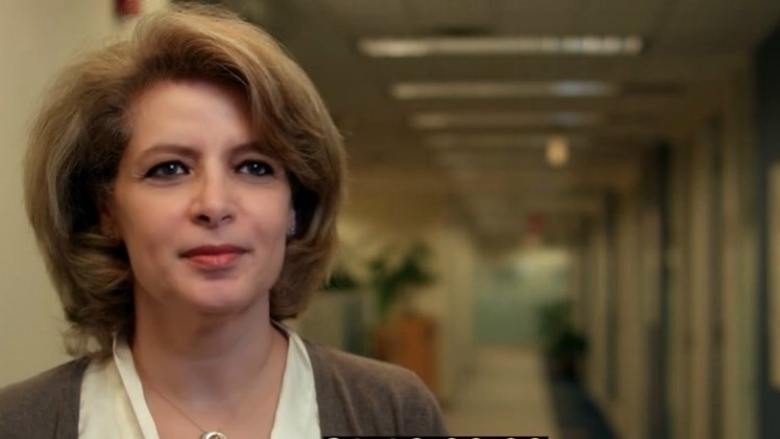Q: What was the rationale to introduce the Program-for-Results (PforR) financing instrument in January 2012?
Fadia Saadah: The development landscape has changed. Bank clients are increasingly implementing their own programs for development and poverty reduction and are asking development partners for financing and expertise to improve programs’ effectiveness and efficiency in achieving results. Management believes that the Bank should provide financing instruments that respond to three broad demands: policy support, project support, and program support. The first two are addressed by Development Policy Financing and Investment Project Financing respectively. PforR fills the gap that existed by offering program support and places more direct emphasis on results by making them the basis for disbursement of funds. It focuses the Bank’s technical and financial assistance more strongly on institutional development and capacity building within countries. Of particular focus are improving a country’s capacity to monitor results and strengthening the public expenditure systems. PforR also enables the Bank to better leverage its own financing and collaborate with other development partners through pooling resources and focusing efforts on supporting government programs.
Q: How does PforR work in different country contexts?
Fadia Saadah: Access to PforR by any country depends on a careful assessment of program systems in terms of performance, capacity and risks and the potential for improvements. In contexts where the existing systems are strong, the Bank may support very wide-ranging and ambitious programs. In countries with weaker systems and capacity, it is likely that the scope of a PforR operation needs to strike the right balance between benefits and risks. How PforR is used will vary, but the flexibility of the instrument allows it to be used in a very wide range of countries and sectors.
Q: To date, has any client country pursued more than one PforR operation?
Fadia Saadah: Yes, 21 of 39 countries that have used PforRs have more than one – Bangladesh, Brazil, Burkina Faso, China, Egypt, Ethiopia, India, Indonesia, Jordan, Kenya, Lebanon, Morocco, Mozambique, Nepal, Nigeria, Pakistan, Rwanda, Serbia, Tanzania, Uganda, and Vietnam. (See all PforR projects)
Q: How does PforR ensure that environmental and social aspects are protected?
Fadia Saadah: The Bank is committed to addressing social and environmental concerns and makes an upfront assessment of these issues prior to determining whether to proceed with a PforR operation. As necessary, the Bank also agrees with the government on measures to strengthen the management of the environmental and social effects of particular programs—measures that may be introduced prior to or as part of the implementation of a PforR operation. In addition, activities with potentially significant, irreversible adverse impacts on the environment and affected people are excluded from PforR. The PforR Two-Year Review Paper and the PforR Board Paper describe how such exclusions are managed.
Q: How is fraud and corruption addressed in PforR supported operations?
Fadia Saadah: The Bank is committed to the highest standards of integrity and transparency and to addressing fraud and corruption. The Operational Policy for Program-for-Results sets out how issues of fraud and corruption are addressed and anti-corruption guidelines have been developed. There is a strong focus in PforR operations on good governance, including provisions for how to handle cases of fraud and corruption. In some PforR operations it is expected that progress in fighting corruption and improving procurement will be among the results needed to release Bank funds (i.e. they would be part of the PforR disbursement-linked indicators).
Q: Does PforR assume that adequate capacity is already in place?
Fadia Saadah: No, a key feature of Program-for-Results is institutional and capacity building. As part of the process of preparing a PfoR operation, the Bank undertakes a rigorous and detailed assessment of client capacity. If adequate arrangements are not yet in place or capacity is weak, the Bank discusses with the government what measures could be taken prior to and/or as part of implementation. If it is not possible to reach an understanding or the risks to implementation are too high, the Bank may decide that the program is not ready for PforR. Indeed because capacity building is an integral feature of PforR, it is expected that it will be used in many cases to help countries strengthen existing institutions and capacity.
Q: What is the Bank’s role in the preparation, appraisal, and implementation of PforR-supported operations?
Fadia Saadah: The Bank is responsible for assessing the quality of the government program to be supported by a PforR operation and its associated systems. It also agrees with the government, in the context of appraisal, on any necessary improvement measures and on the Bank’s role in supporting implementation of those measures. There is a strengthened focus on implementation support. The Bank is responsible for providing close and frequent implementation support to government teams implementing PforR operations. Collaboration with other development partners is also critical for implementation support..
Q: What is the role of the Bank’s oversight units?
Fadia Saadah: PforR is subject to the same oversight functions as other financing instruments. The independent corporate oversight units—Inspection Panel (IPN), Institutional Integrity (INT), the Internal Audit Department (IAD), and the Independent Evaluation Group (IEG)—oversee PforR operations. The Operational Policy for PforR discusses the specific role of each of the units. The Bank (INT) reserves the right to conduct its own investigations and will exercise this right as the circumstances require (e.g. the nature of the case, lack of action or the capacity of the government). The Bank is also able to impose sanctions against firms and individuals in accordance with its sanctions policies and procedures.

